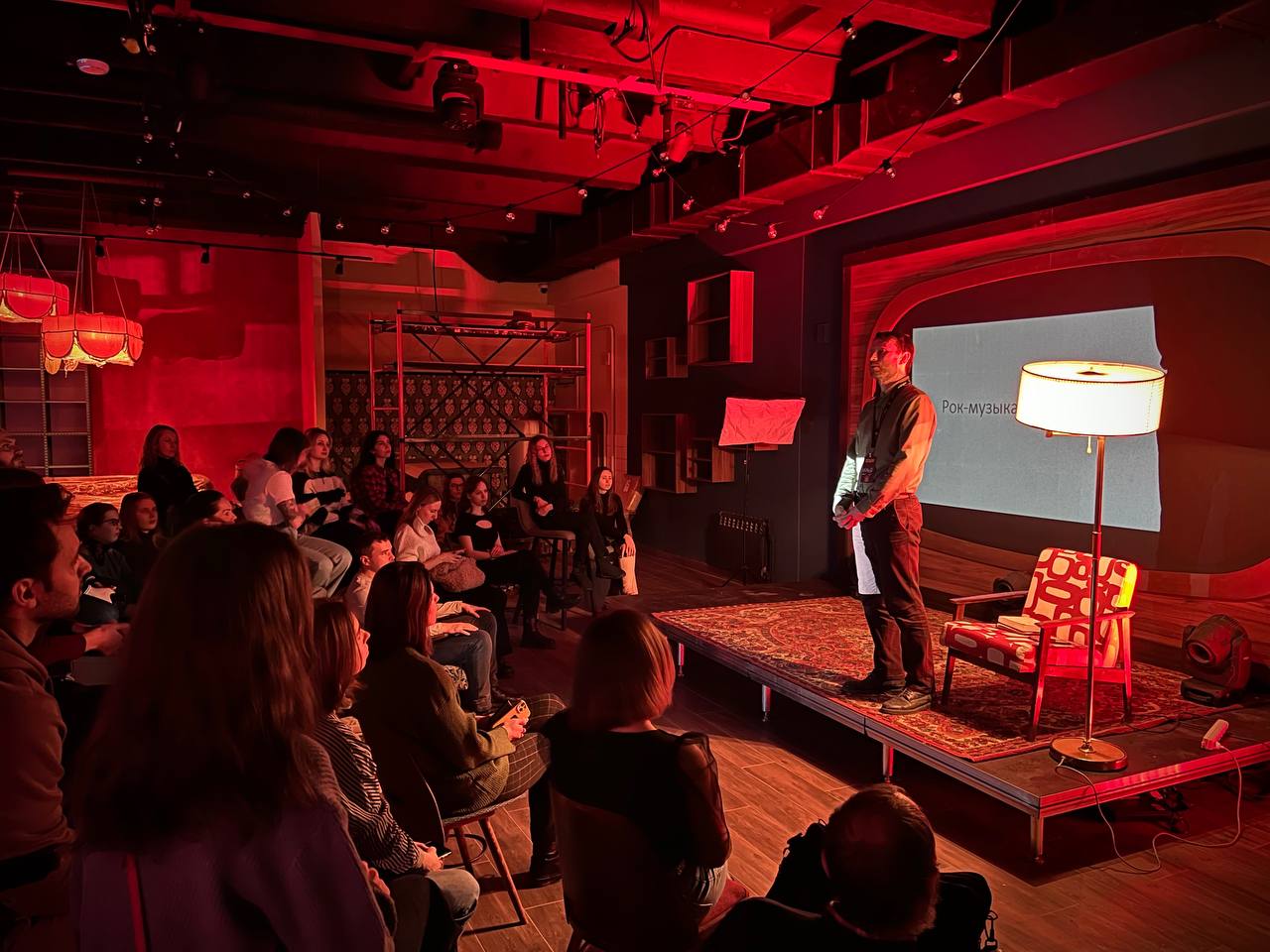Rock musician as artist (Public talk discussion)
Public talk from 21 February 2024

In our lecture series we talk about the connection between rock music and various cultural phenomena. Rock music, despite its specific design, arose as a synthesis of related cultural practices. Many famous rock musicians had an artistic education: John Lennon, Keith Richards, Ronnie Wood, Bryan Ferry and others. Every major English city had art colleges, where future rock stars mastered the profession of designer, graphic artist, sculptor or painter. They learned rock and roll on their own; their passion for new music pushed them away from academic shackles and promised career prospects in the developing show business. A specific creative environment arose within art colleges, which made it possible for British young people to unite in musical groups. Professional artists chose the destiny of rock musicians. John Lennon, without completing his education as a type designer at Liverpool College, set off with his associates to conquer Hamburg. It was in Hamburg that members of The Beatles, playing around the clock in clubs, turned into professionals. The “college” of rock musicians is a constant practice: rehearsals, concerts and recordings. But sometimes the craft skills acquired during special education could also be useful for activities related to rock music. John Lennon designed posters for concerts himself, Queen vocalist Freddie Mercury himself designed the band’s coat of arms, Bob Dylan designed album covers. In these examples, fine art appears as a concomitant activity of the musician’s vocation. This approach can be described by the banal formula “A talented person is talented in everything.”
Another situation is the attitude towards rock music as an artistic gesture with a conscious strategy, image building and conceptual content. An example of this approach is the work of Bryan Ferry and David Bowie. Ferry studied with one of the main representatives of British pop art, Richard Hamilton, and before starting a successful musical career, he managed to participate in several exhibitions. Bowie painted and collected art in the mid-1970s.
An interesting figure as an example of the interaction between rock music and art is the English artist, poet and musician Billy Childish. Childish recorded about 100 albums and founded an entire artistic movement called Stuckism, which became a full-fledged influential cultural phenomenon. Childish’s case is an example of a successful combination of musical and artistic activities. Childish is as much a rock musician as he is an artist.


